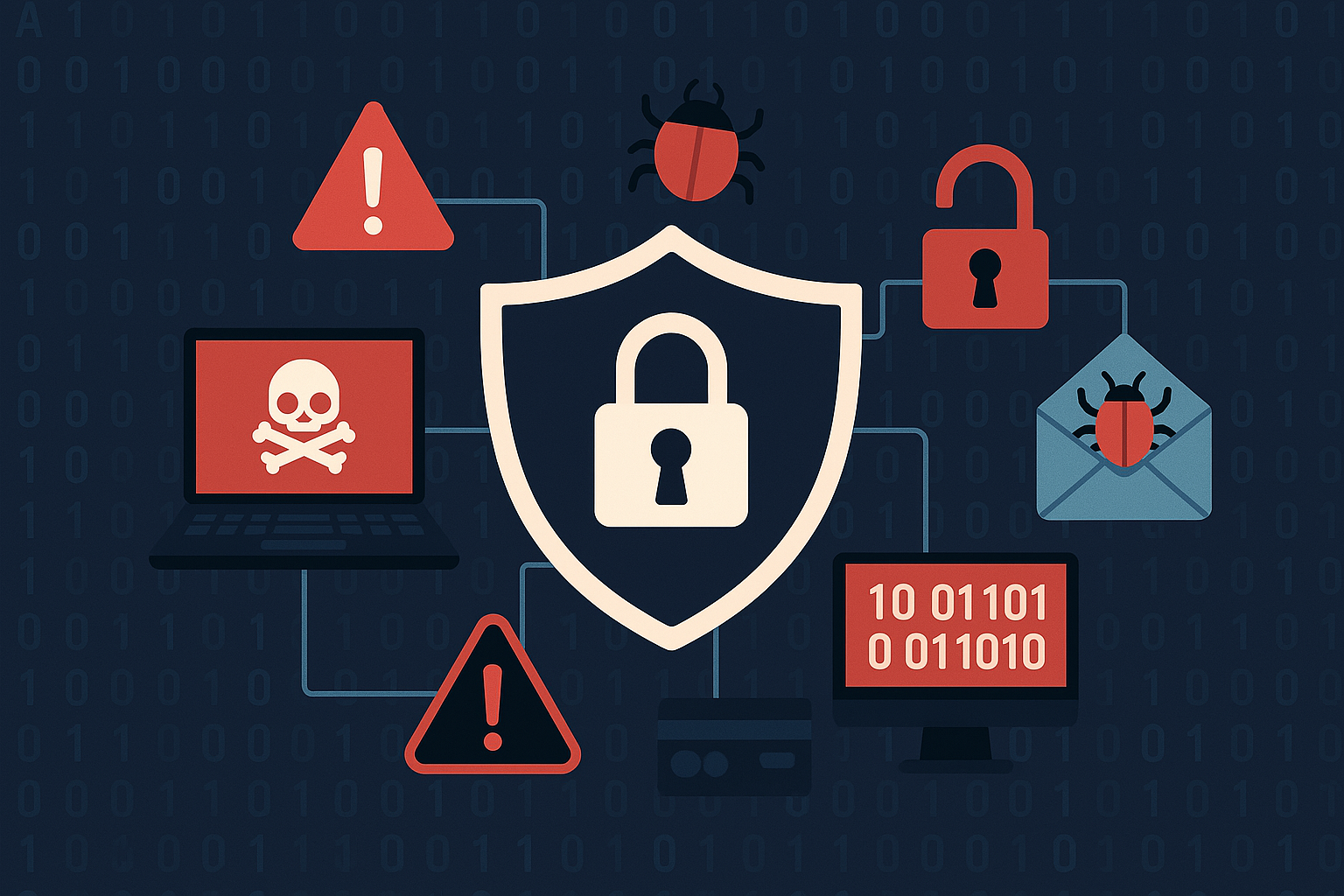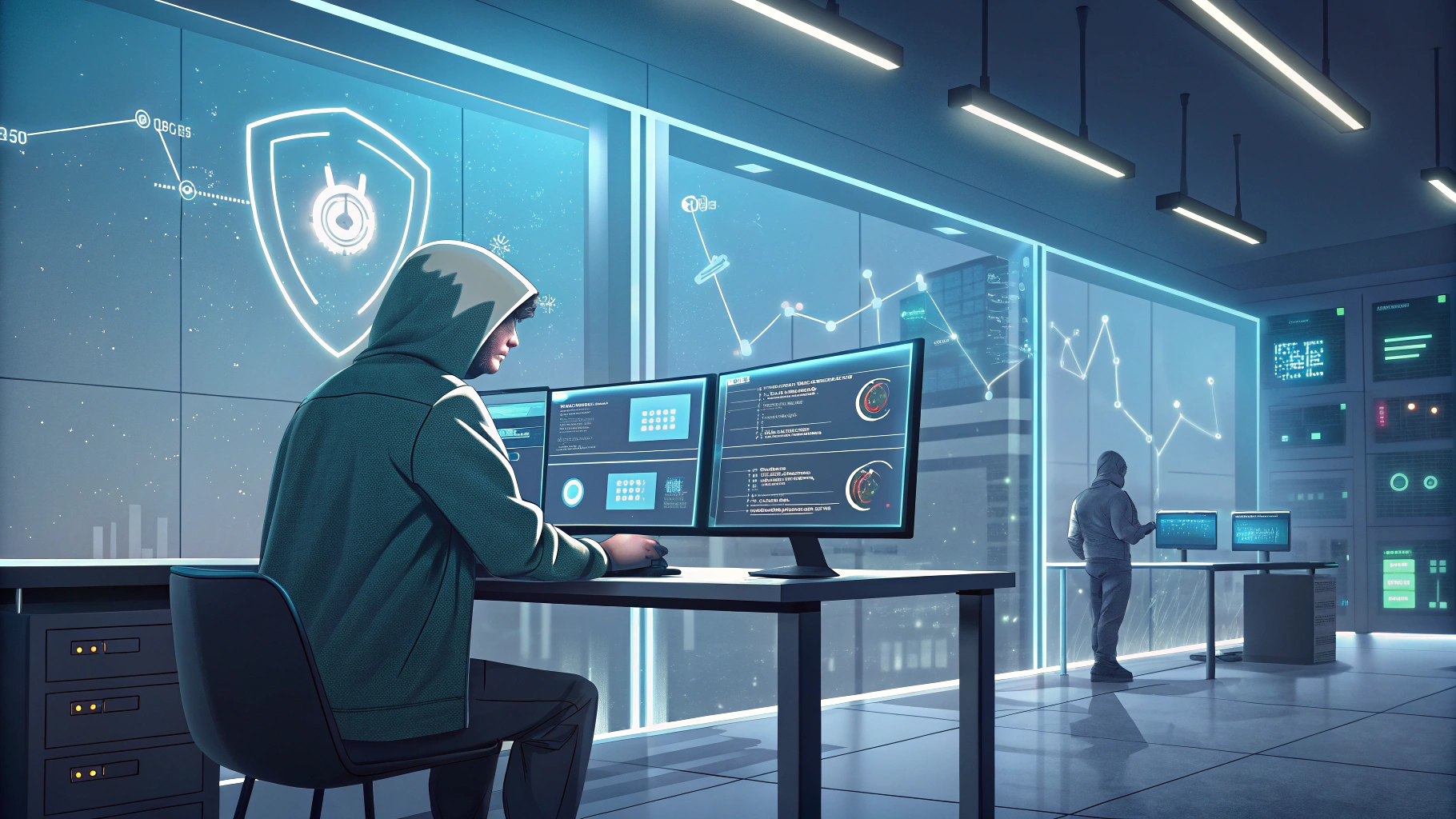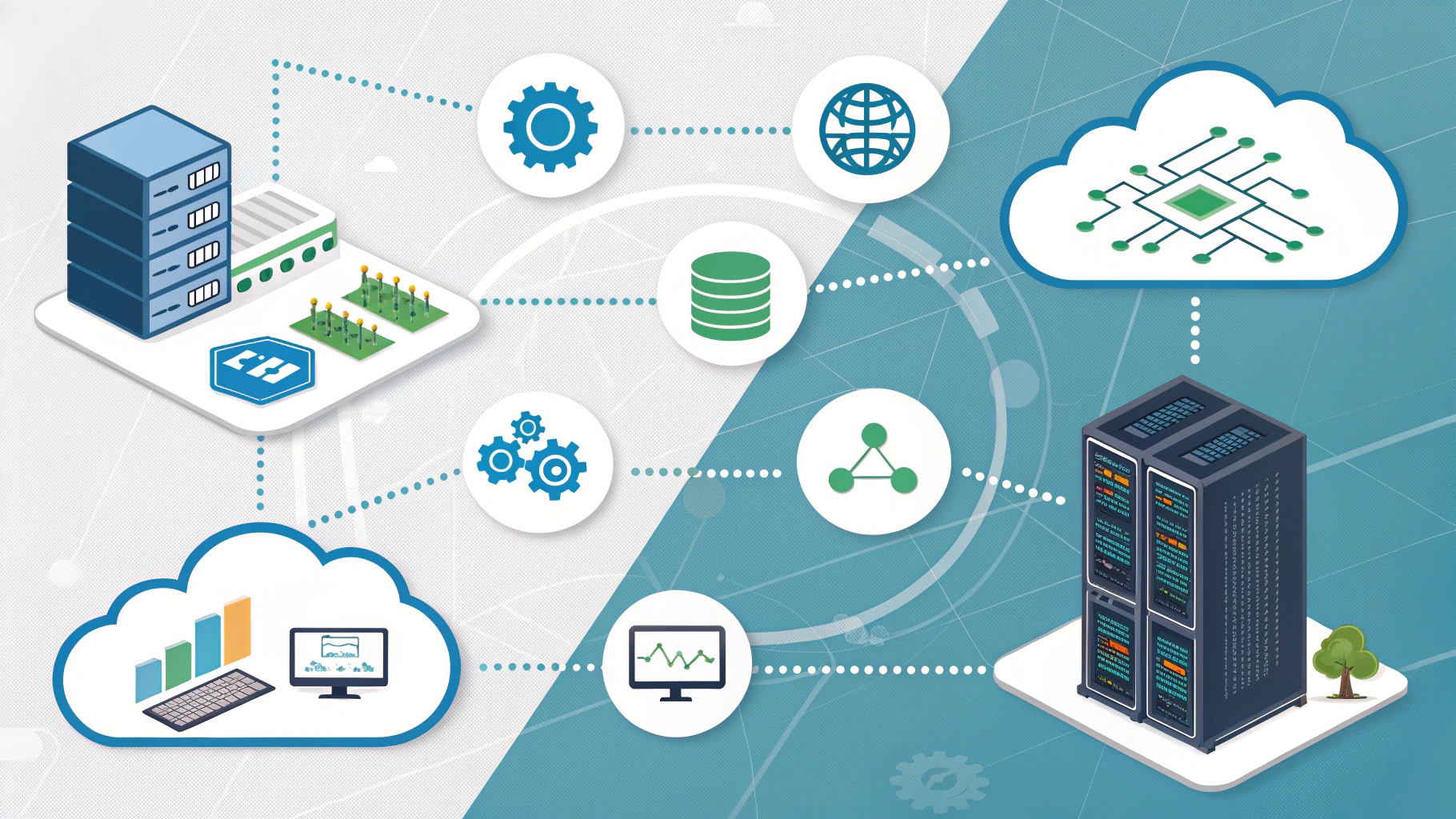
Summary
Cybersecurity in 2025 is no longer optional—it’s mission-critical. This blog breaks down the top 10 emerging threats, including AI-powered attacks, ransomware-as-a-service, deepfake fraud, and zero-day exploits. Learn how hackers are evolving—and more importantly, how you can stay ahead of them. Whether you’re an IT leader, business owner, or tech enthusiast, this guide gives you the tools and strategies to defend against tomorrow’s biggest digital dangers.
As we move deeper into the digital era, cybersecurity threats in 2025 are no longer just IT concerns—they’re boardroom-level challenges. Businesses, governments, and individuals are all targets of increasingly advanced cyber attacks designed to exploit digital vulnerabilities, steal sensitive information, and disrupt operations.
Let’s dive deep into the 10 most critical cybersecurity threats you need to prepare for in 2025. This is more than just a list—it’s a strategy for staying ahead.
1. AI-Driven Cyber Attacks: Machine vs. Machine Warfare
AI is revolutionizing both cybersecurity defenses and offensive cyber capabilities. Hackers are using machine learning to automate phishing, generate deepfakes, crack passwords, and identify system vulnerabilities faster than ever.
What’s New in 2025:
- AI-powered malware can adapt in real-time to security protocols.
- ChatGPT-style phishing messages are indistinguishable from real human communication.
- Attackers are using AI to analyze massive datasets and detect weaknesses across networks.
How to Defend:
- Integrate AI-powered threat detection tools like EDR (Endpoint Detection and Response).
- Deploy behavioral analytics to flag unusual activity.
- Continuously train teams to spot AI-assisted phishing.
2. Ransomware-as-a-Service (RaaS): Crime in a Subscription Model
Ransomware isn’t just a hacker’s tool anymore—it’s a business. RaaS kits are sold on the dark web, allowing even non-tech-savvy criminals to launch devastating cyber attacks.
2025 Trends:
- Targeting critical infrastructure like hospitals, schools, and governments.
- Double extortion: Not just encrypting data, but threatening to leak it.
- Use of cryptocurrency for untraceable ransom payments.
Real Case:
The 2023 Colonial Pipeline attack showed how one ransomware strike could shut down fuel supplies across the U.S.
Defense Strategy:
- Backup all data frequently and keep offline copies.
- Segment networks to limit ransomware spread.
- Invest in ransomware-specific security solutions like immutable backups.
3. Advanced Phishing & Social Engineering: Hyper-Personalized Attacks
Phishing has evolved far beyond generic “Your account has been hacked” emails. In 2025, attackers use AI and social media scraping to create personalized messages that mimic real conversations, making even trained users fall for scams.
Tactics to Watch:
- Business Email Compromise (BEC) targeting executives.
- Deepfake voicemails mimicking CEOs to authorize wire transfers.
- QR code phishing (“quishing”) gaining popularity.
Prevention Tips:
- Conduct simulated phishing training regularly.
- Enable multi-factor authentication (MFA) everywhere.
- Review financial protocols for high-risk authorizations.
4. Supply Chain Attacks: Your Vendor Could Be the Weakest Link
In today’s interconnected digital ecosystems, a single vulnerable vendor can compromise dozens or even hundreds of clients.
Key Incidents:
- The SolarWinds breach (2020) is still one of the most infamous examples of supply chain exploitation.
2025 Risks:
- Exploits via third-party software updates.
- Attacks through cloud service providers or APIs.
How to Respond:
- Enforce zero trust policies for external vendors.
- Demand security audits and certifications from third parties.
- Use SBOMs (Software Bill of Materials) to track dependencies.
5. Cloud Security Gaps: Misconfigurations Still Haunt Us
As cloud adoption accelerates, so do data breaches caused by human error, weak configurations, and poor access control.
Stats:
- Over 70% of cloud breaches are due to misconfiguration or lack of encryption.
- APIs are the most targeted attack surface in cloud environments.
Must-Do in 2025:
- Apply least privilege access policies.
- Conduct automated cloud configuration scans.
- Encrypt data at rest and in transit.
6. Deepfakes & Synthetic Identity Fraud: You Can’t Trust Your Eyes or Ears
With real-time deepfake tech, attackers can impersonate voices, faces, or even entire Zoom meetings. This is more than a novelty—it’s a serious identity threat.
Use Cases:
- Fraudulent KYC (Know Your Customer) attempts in banking.
- Fake executives authorizing fund transfers or account access.
- Manipulated videos spreading misinformation or blackmailing individuals.
Countermeasures:
- Invest in deepfake detection tools.
- Use multi-channel verification (e.g., a follow-up call or secondary confirmation).
- Stay updated with facial recognition and biometric security improvements.
7. IoT & Smart Device Vulnerabilities: Billions of Open Doors
By 2025, there will be over 75 billion IoT devices—each one a potential entry point for attackers if not secured properly.
Risks:
- Smart home devices used in botnets (like Mirai).
- Medical IoT (like pacemakers or insulin pumps) being targeted.
- Vehicles and city infrastructure being remotely compromised.
Best Practices:
- Change default credentials immediately.
- Segment IoT devices on separate networks.
- Monitor IoT traffic with network access control (NAC) tools.
8. Zero-Day Exploits: Exploiting the Unknown
A zero-day vulnerability is a flaw that hackers discover and use before developers even know it exists—making it incredibly dangerous.
High-Profile Threats:
- Zero-day vulnerabilities in widely-used platforms (e.g., Windows, Android) can lead to global-scale breaches.
How to Protect:
- Use virtual patching for critical systems.
- Keep systems updated and subscribe to threat intel feeds.
- Implement layered security, assuming some zero-days will slip through.
9. Insider Threats: Trust, But Verify
Not all threats come from hackers in a hoodie—many originate inside your organization. Whether malicious or accidental, insiders pose one of the hardest threats to detect.
Real-World Examples:
- An employee downloading sensitive data to take to a competitor.
- Misconfigured permissions exposing confidential info.
2025 Trends:
- Remote work has increased access points for insiders.
- Cloud storage makes data exfiltration easier than ever.
What Works:
- Set up user behavior analytics (UBA) tools.
- Limit data access based on roles (RBAC).
- Train employees on cyber hygiene and accountability.
10. Nation-State Attacks: Cyberwar is the New Cold War
Geopolitical tension is translating into full-blown cyber warfare. Countries are targeting each other’s power grids, financial systems, and even election infrastructures.
2025 Projections:
- More proxy attacks via criminal groups.
- Cyberattacks as first strikes in military conflicts.
- AI-enhanced digital espionage.
Protection Measures:
- Governments must strengthen critical infrastructure protections.
- Businesses should prepare incident response plans aligned with national standards (like CISA’s guidance).
- Share threat intelligence across industries.
🔐 Final Thoughts: Be Proactive, Not Reactive
Cybersecurity threats in 2025 will be more persistent, targeted, and automated than ever before. From deepfakes to zero-day attacks, the digital landscape demands a new level of vigilance.
What You Can Do Today:
- Stay updated on evolving cyber threats.
- Build a cyber-resilient culture across your team.
- Invest in adaptive security solutions that grow with your needs.
Your digital safety is only as strong as your weakest link. Let’s make sure that link isn’t you.







